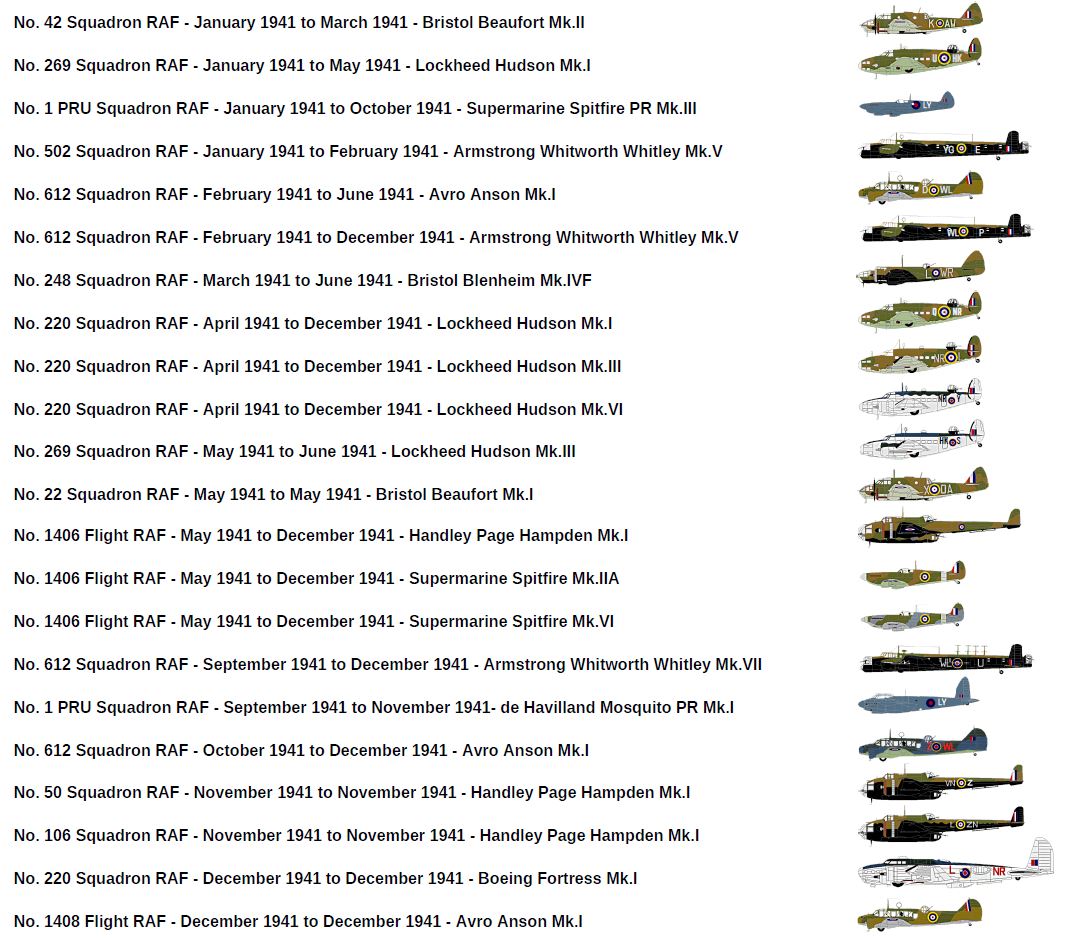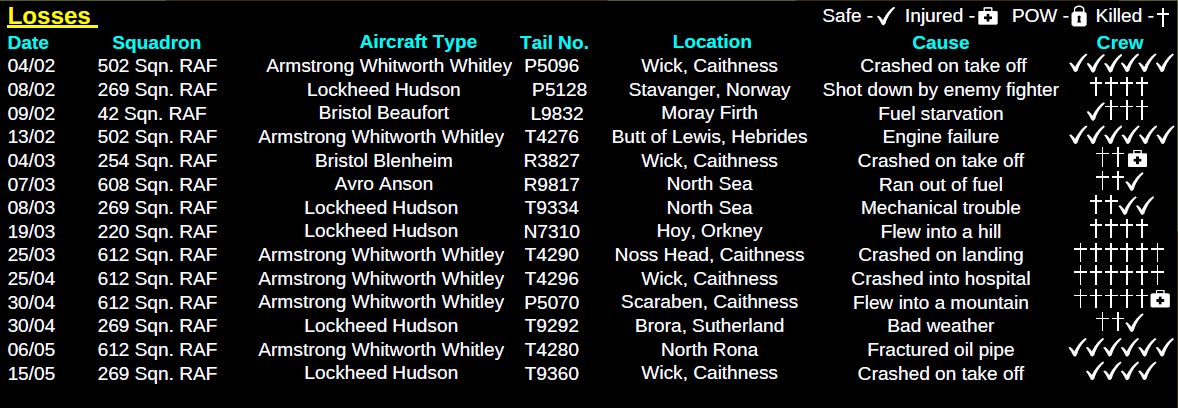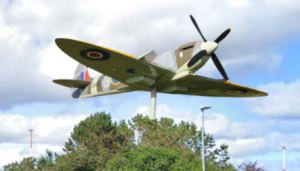Site 20. RAF Wick : January – May 1941

Air Operations – January to April
JANUARY – On the 8th, 502 Squadron transferred to Wick equipped with Armstrong Whitworth Whitleys.
The harsh winter experienced at the end of 1940 continued into 1941, and on the 19th aircraft from Wick had to drop supplies to the personnel manning the decoy airfield at Sarclet due to all roads being blocked with snow. 42 Squadron carried out 17 sorties during the month hunting for Axis ‘targets of opportunity’, with limited success. On the 12th, two Beauforts attacked the Norwegian transport ship SS Toledo in Sogne Fjord with torpedoes and bombs scoring a direct hit. 269 Squadron flew 75 offensive maritime patrols during January and Convoy escorts increased as more and more vital supplies made their way across the Atlantic from the US and Canada, with 269 Squadron carrying out 91 escort sorties this month.
FEBRUARY – As the bitter winter conditions continued, aircraft from Wick had to drop further supplies to the RAF personnel at Sarclet on the 2nd.
A detachment of Avro Ansons and Whitleys arrived on the 10th flown by 612 Squadron to replace the Whitleys of 502 Squadron which transferred to RAF Dyce the following day. 42 Squadron carried out 21 offensive maritime patrols during the month with a further 35 flown by 269 Squadron. Convoy and merchant vessel escorts had also increased, and all three squadrons were now involved in these missions, with 42 Squadron flying seven sorties, 269 Squadron flying 89, and 612 Squadron flying 25.
On the 8th, three Beauforts of 42 Squadron attacked a German convoy escorted by two destroyers off the coast of Norway, but with limited success. The following day seven Beauforts launched torpedo attacks against a flotilla of five German destroyers scoring several direct hits. The evening of the 13th saw six Hudsons of 269 Squadron take off for an attack on German shipping, and eight Beauforts of 42 Squadron to drop naval mines in the entrances to several Norwegian fjords.
MARCH – 42 Squadron transferred to RAF Leuchars after having spent nine months at Wick.
On the 17th two Junkers Ju 88 bombers dropped bombs on Wick airfield and the station living quarters killing a sergeant. Offensive maritime patrols continued, with 269 Squadron flying 26 such missions and 612 Squadron dropping bombs on a U-boat in the Moray Firth on the25th.
The Luftwaffe bombed the decoy airfield at Sarclet on the 27th but the bombs missed their target and landed close to the village of Thrumster. Convoy and merchant vessel patrols continued through February with 269 Squadron flying 78 sorties and 612 Squadron a further 41.
APRIL – Sarclet decoy airfield was bombed once again on the 2nd by Junkers Ju 88 bombers.
Six Hudsons of 269 Squadron successfully bombed the aluminium factory at Høyanger in Norway, but on the 12th a detachment from this squadron was transferred to RAF Kaldaðarnes in Iceland. On the 18th and 19th, thirteen Hudsons were involved in a massive search for five Bristol Blenheims that had failed to return from a raid over Norway. The missing aircraft were from two squadrons based at RAF Leuchars.
On the 24th, Whitley T4321 of 612 Squadron had to make a wheel’s up ‘pancake’ landing on the tiny island of North Rona after suffering a fractured oil pipe to its port variable-pitch propeller. Amazingly the aircraft was later disassembled and slid down the cliff in sections on an aerial cableway to waiting boats. The aircraft was later reassembled, repaired and returned to service with a training unit until it was retired from service in 1944.
On the night of the 26th, a Junkers Ju 88 bomber followed a Hudson in on its final approach to Wick, dropping four bombs across the airfield and killing one airman. The 29thsaw the arrival of 220 Squadron equipped with Lockheed Hudsons. Between 269 and 612 Squadrons, 120 escort sorties were flown by 269 and 612 Squadrons this month, as well as a further 32 anti-submarine sweeps.
MAY – Three Whitleys of 612 Squadron were involved in an extensive search on the 1st for one of their aircraft after it had failed to return from a mission the previous evening after it flew into Scaraben Mountain.
The squadron spent most of the month flying 30 anti-submarine patrols using their top secret ASV radar (Anti Surface Vessel) to search for surfaced U-boats. The bulk of the convoy and merchant vessel escorts were taken up by 220 Squadron which carried out 85 escort sorties. One of their Hudsons was involved in a dogfight with a Focke-Wulf Fw 200 Condor on the 7th after the crew spotted it attacking a merchant vessel. 220 Squadron also carried out 25 anti-submarine patrols in May and ten of their Hudsons, along with two from 269 Squadron, were involved in an attack on the German battleship Admiral Hipper on the 21st.
On the same day a reconnaissance Spitfire of 1 PRU Squadron photographed the battleship Bismarck and the battlecruiser Prinz Eugen in Grimstadfjord near Bergen in Norway.
Three days later a total of 64 aircraft took off from Wick, three abreast, including Beauforts from 22 and 42 Squadrons and Whitleys from 612 Squadron, in an attempt to sink the Bismarck. The battleship had already sailed by the time the attack force was over the fjord and so managed to evade the bombers.
Several of the Hudsons of 269 Squadron transferred to Iceland this month. The remaining aircraft conducted 48 escort sorties and a further 11 anti-submarine patrols. This month also saw the delivery of “The Spirit of Lockheed Vega Employees” to 269 Squadron, a Hudson Mk.III which had been built with funds raised by the Lockheed employees at Burbank, California, and donated to the RAF.



